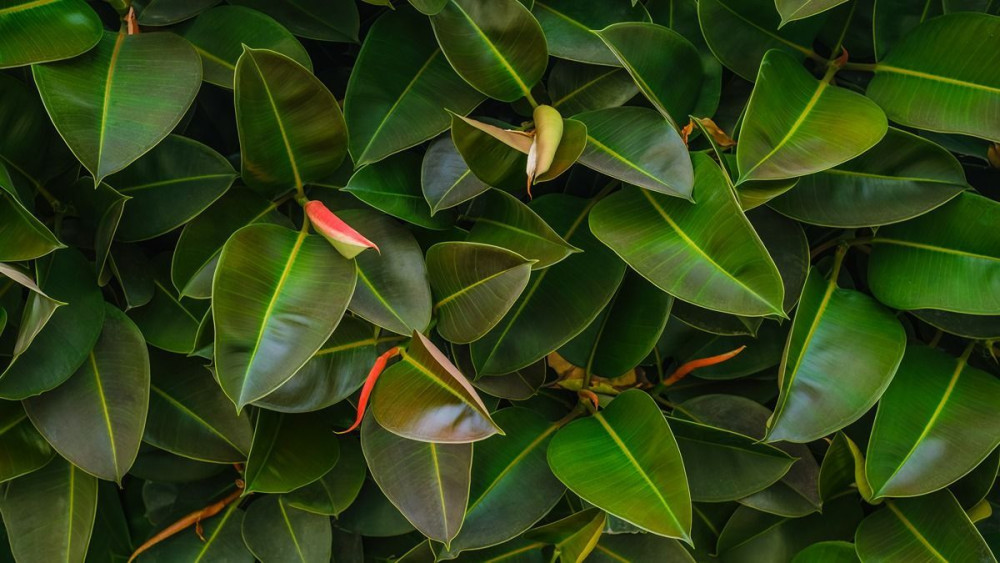
Sourcesqft 0 Comments 2547 Views
Rubber plant benefits and growing & caring tips
Is there a perfect indoor plant? Something that looks absolutely magnificent, grows quickly, requires easy care, and has incredible benefits? We think the rubber plant has all these traits that just make it an excellent houseplant.
Interestingly, the plant has a unique history of being used to make rubber with its latex sap. This is why it is known as rubber plant, rubber fig and rubber tree. Let’s discover everything about rubber plant, from its interesting facts and benefits to growing and caring tips.
Scientifically known as Ficus Elastica, Rubber Plant is native to Southeast Asia, Southern China and Indonesia and belongs to the family Moraceae. It has glossy, oval-shaped leaves in dark green colour, giving it a distinct look. The trunk and stems of the plant oozes a milky sap or latex.
The plant has been used to make bouncy balls by the Mesoamerican people in 1400 BC. In India, people use its roots to make living bridges over small rivers. However, today, the plant is best known as a stunning houseplant with a rich silky sheen, creamy colour and wonderful air-purifying qualities.
Follow these easy steps to plant a rubber plant at home:
Get a pot that is not larger than one-third of the root ball of your plant.
Fill it with a rich potting mix. Ensure the soil mixture drains well, releases water and offers good air circulation.
Remember to put on gloves in case the stem breaks, as the plant’s milky latex may cause skin irritation.
Keep the plant in the container so the root ball’s top is almost an inch below the rim. This will prevent the soil from overflowing while watering.
Fill more soil around the rootball.
Water until moisture starts draining out of the pot’s bottom.
Keep a saucer under the container and shift your plant where you want to keep it.
Repot the plant every year since it grows fast.
How To Care For Rubber Plant?
The rubber plant can be easily grown indoors. However, you need to give it time to adjust to the change and take care of these basic care requirements.
Light: It grows best in bright, indirect light. Keep it in an east-facing window. Avoid intense afternoon sunlight, which can burn its leaves. Though the plant can tolerate lower light, more light helps with strong stem growth.
Soil: The rubber plant requires well-draining soil with good aeration. Use an all-purpose commercial potting mix for indoor plants. It balances moisture retention and drainage required.
Water: Overwatering and underwatering can cause the leaves to start falling. Let the soil dry slightly, and then water it. Never let the plant dry and have wilted, drooping leaves. Cut down on watering during winter.
Fertiliser: Rubber plants become heavy feeders from spring to late summer. Feed them a balanced blend of rich plant nutrients, promoting strong growth. One application is enough for up to four months. Natural-based fertiliser provides gentle nitrogen that helps retain the leafy sheen. Put fertilisers on hold during winter.
Pruning: Remember to prune the plant’s branches a few inches in late winter to make them bushy. Also, remove dead or damaged leaves anytime.
Propagating: Rubber plants grow aerial roots, making it easy to propagate the plant from simple stem cuttings in early spring.
Repotting: Rubber plants might grow out of their pots every two or three years. Small containers limit the plant’s growth. While shifting, make sure to pick a container a few inches larger than your current pot.


0 Comments